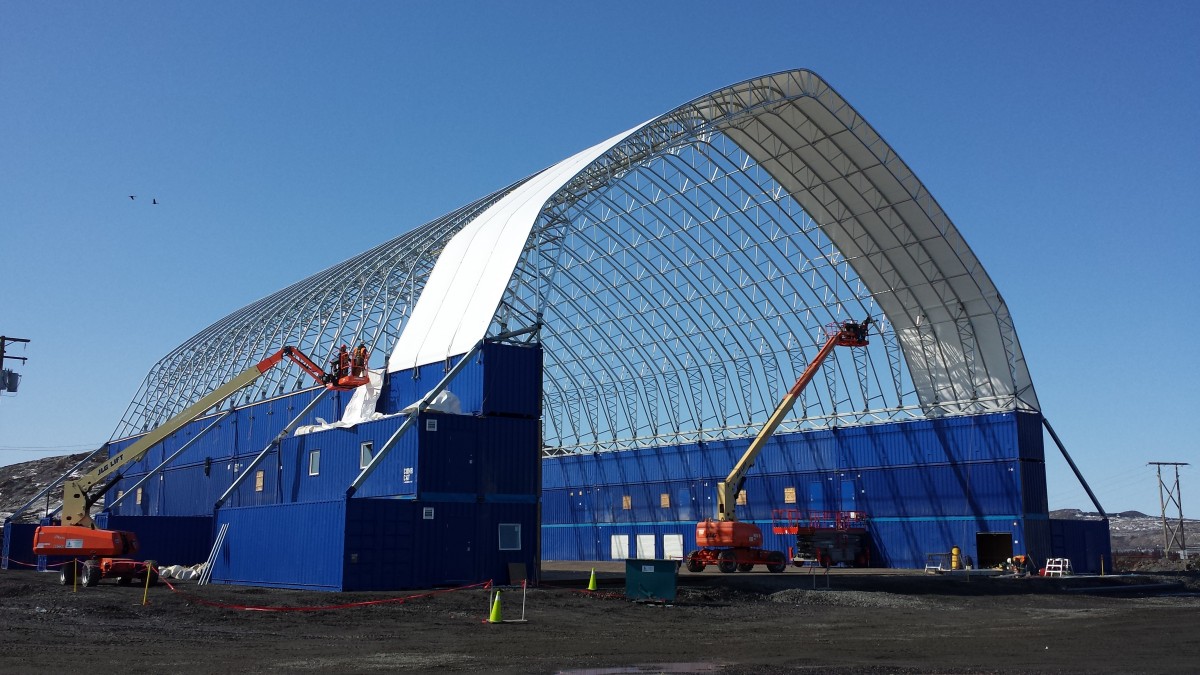By: Robert Lee
The two questions most purchasers ask themselves when deciding on a fabric building purchase are:
Is it within my budget?
Does the purchase please me (aesthetically)?
Buying toothpaste? Is it on sale and does it make my teeth shine? A car? Is it the best price and does it make me feel good driving it? A steak? Is it reasonably priced and will I enjoy it? Even a house? Can I afford it right now and will I be comfortable in it?
Answers to Fabric Building Questions
Yet, the more tedious, detailed, and logical questions generally go unasked, or until it is too late. Quality, durability, value, practicality, and many such questions seem immaterial in the euphoria of the purchase moment.
Because the acceptance of fabric buildings as a viable construction option is relatively new to most people and building authorities, many more questions go unasked. So, what do you need to consider when selecting a fabric building manufacturer or supplier? Just a few include:
-
Designed or engineered to your site
-
Fabric type and warranty
-
Construction systems (purlins, trusses, bolts, cables, construction materials)
-
Future development & current use plans
-
Cost/Benefit analysis
-
Environmental conditions
Within each question arise numerous other considerations. Let us start with engineering. Ideally, rather than just having a building designed, it should be engineered with your environmental (wind, snow loads, exposure, soil type, etc) conditions factored in. But the best planning is worthless if the engineering and materials that go into the actual structure are inferior.
There are black steel, powder-coated, pre-galvanized, in-line galvanized, galvalume, or hot-dipped galvanizing finishes on the steel components of a fabric structure. The components we hot-dip have all cuts, bolt holes, and fissures sealed. The other types leave potential weak areas.
Size and Depth
We design and engineer the size and the depth of the truss to handle the loads, length, usage, and environmental stresses placed on it. Purlins generally run parallel to the eave of a building, between trusses. They provide lateral rigidity. Choosing the proper purlin is critical to building strength and fabric support. A round tubular purlin is less likely to be abrasive on the fabric and cause tears at stress points.
The right size of purlin also is critical to avoid failure in extreme load or wind conditions. Like the truss, we need to protect the purlin against corrosion, most effectively through galvanizing.
Tension Building
A fabric building is a tension building, with the fabric stretched over a frame. The tighter you stretch the material, the more rigid the structure is. However, if you don’t correctly calculate stress points, a tightly stretched fabric can cause failure in the support structure. If the engineering is of high quality, the fabric stretching will actually increase the strength of the building. Here, the choice of material is important.
An HDPE woven fabric is more suitable, for example than a PVC fabric. Proper UV treatment increases lifespan. HDPE is naturally mildew resistant, but proper maintenance and occasional cleaning are valuable. Some structures double the fabric at pressure points to allow for a rub and wear. For a properly designed building, this is not necessary, as a sufficiently tensioned fabric will not rub or move excessively.
The Base of a Fabric Building
The base (foundation) of the building is important, as well. However, fabric buildings are quite versatile. You can anchor them to the ground, constructed on a concrete footing, built on a wood foundation, or even mounted to shipping containers. Again, this is where engineering is vital.
In addition to the trusses and purlins, many designs have additional cross members and cables. These need to be protected from moisture, chemicals, and corrosion. In a quality fabric building, everything from bolts to anchors will be treated to protect against chemicals, salt, abrasion, and moisture.
One of the advantages of a fabric building is the ease with which it can be expanded. From the ground up to the trusses, purlins, cross members and cabling, to the cover material, a fabric building offers a simple, efficient design that is quickly installed and easily expanded. That being said, the choice of the correct materials, determined by quality on-site engineering, is vital.




